I’ve wandered the streets of Yvoire more times than I can count over the years, and each visit feels like stepping back into another era.
Nestled on the French shores of Lake Geneva, this village is a gem I keep returning to, especially outside peak season when it’s quieter, and the atmosphere is pure magic.
Known as the “Pearl of Lake Geneva,” Yvoire has a charm that’s hard to resist.
Its historic lanes, rich with flowers and beautifully kept, gently lead you to the peaceful waterfront, where views of Lake Geneva, the Chablais Alps, and the Jura Mountains greet you.
My visits to Yvoire
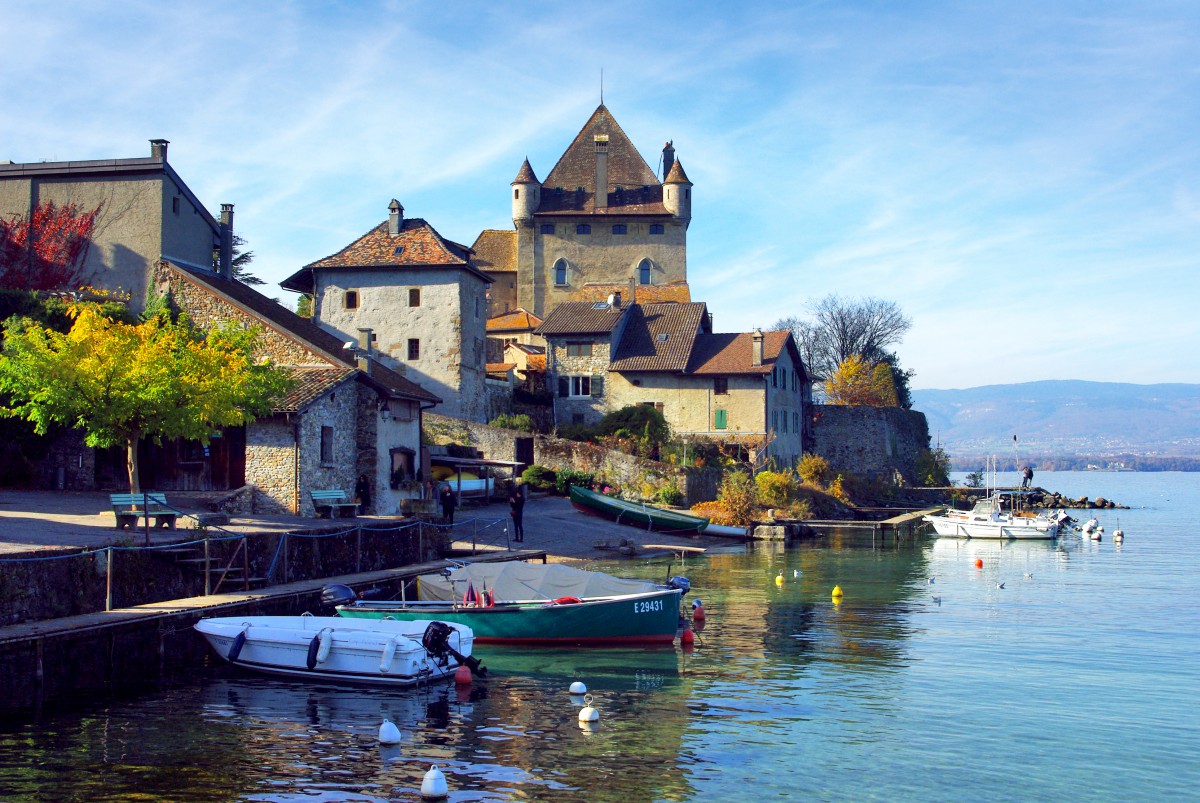
The first time I visited Yvoire was in the early 1990s when I was a teenager.
I spent the Summer holidays with my family in Les Grandes Rousses in the Jura mountains.
For my birthday, we decided to go on an excursion to the Haute-Savoie through Switzerland.
This combined train+boat ticket is still on sale at the Tourist Office Centre of Les Rousses (fees in Summer 2022 were 38.80 Swiss francs per person).
It is a great and fun way to discover the Swiss Jura, Nyon, Lake Geneva, and Yvoire on a day trip.
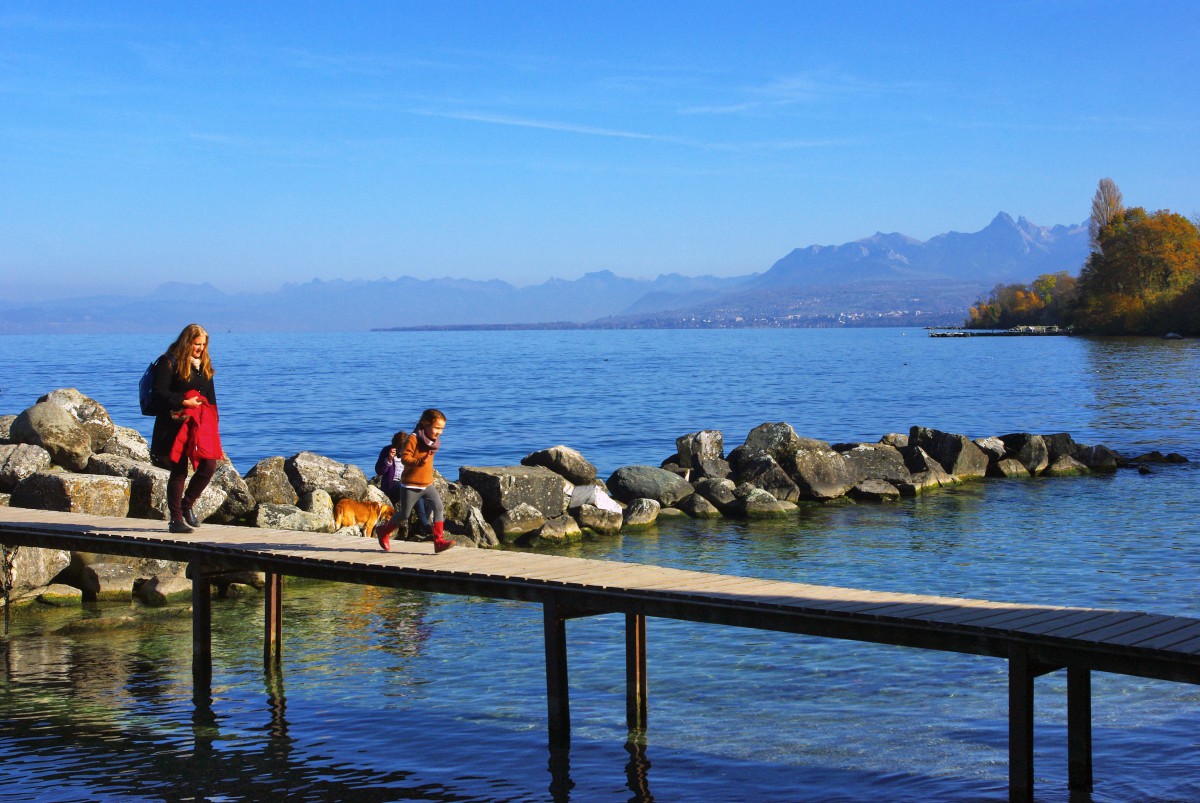
In Autumn 2017, I returned to the medieval village with my little family, this time by car from Annecy.
We enjoyed visiting the narrow, cobbled streets that still nicely flowered in this year’s season.
The sight of the castle and golden leaves reflecting in Lake Geneva’s calm, silvery waters lapping on the shore was unforgettable.
The photos illustrating this article were taken during our November visit.
Where is Yvoire situated?
The village of Yvoire is located in the département of Haute-Savoie, in a region of the French Alps known as the Chablais, situated at the northern limit of the French Alps.
The waters of Lake Geneva wash the village.
It lies at the northern tip of a promontory (Presqu’île de Léman), which separates the ‘petit lac’ (small lake) from the ‘grand lac’ (large lake).
A bit of history
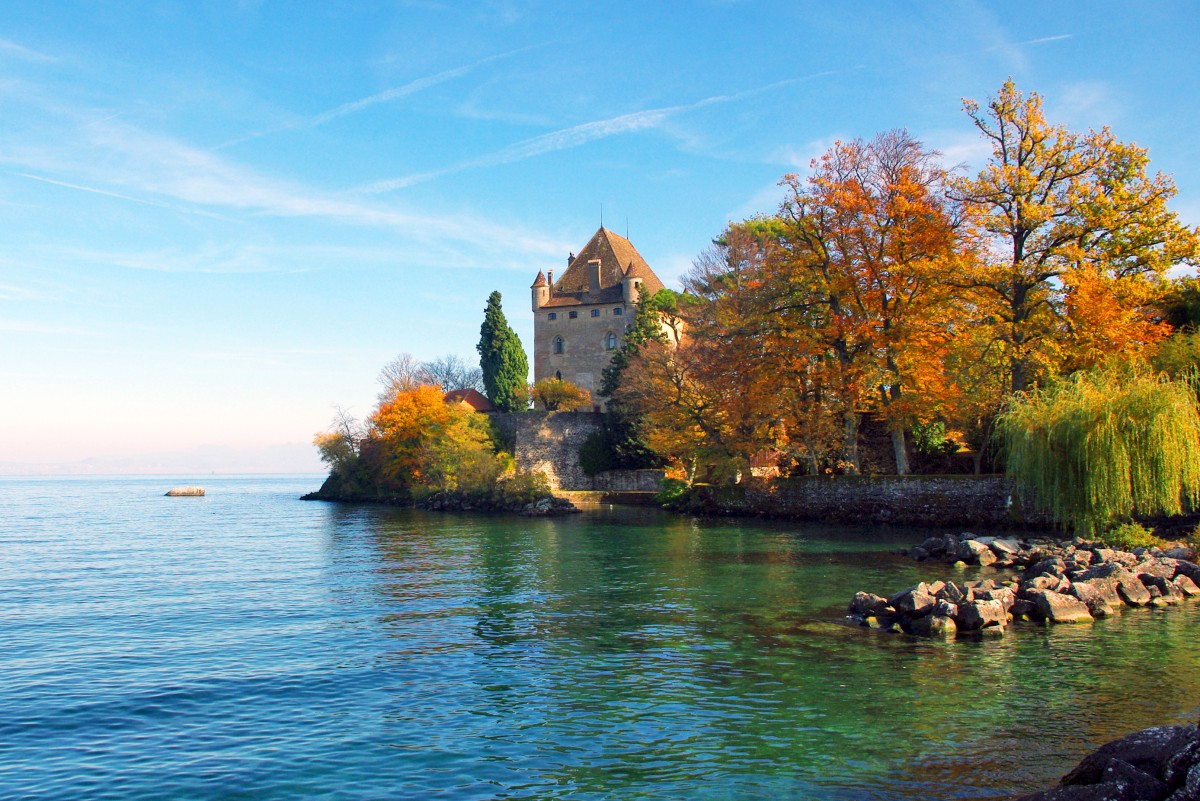
Yvoire was initially a little fishing harbour overlooked by the square keep of its castle.
In the 14th century, Amadeus V, Count of Savoy, understood the strategic location of Yvoire in the region of Geneva and had the village fortified during the war between Savoy and the French province of Dauphiné.
Yvoire played an important military role, and its inhabitants were given tax privileges in 1324.
From 1536 to 1591, the Bernese, allies of the French and Geneva, occupied the village and its surroundings.
Yvoire was pillaged, and its fortifications were dismantled.
The castle was also severely damaged and stayed roofless for 350 years.
Until the 1950s, the village was inhabited by farmers and fishermen and was not an important tourist destination.
What to see in Yvoire

Yvoire has retained its medieval character with its stone houses and wooden balconies decorated with flowers from Spring to Autumn.
Although wars during the 16th century destroyed much of the village, many relics of Yvoire’s medieval past remain today: the castle, the fortifications, the fortified gateways, the ditches, and old houses.
🎦 View my guided tour of Yvoire:
The entrance gates
From any car park you choose, you’ll enter the village through one of the two medieval gates.
In the Middle Ages, the main road from Geneva to Thonon crossed through the village by the two fortified entrance gates: Porte de Rovorée and Porte de Nernier.
They controlled comings and goings and trade activities.
Porte de Rovorée
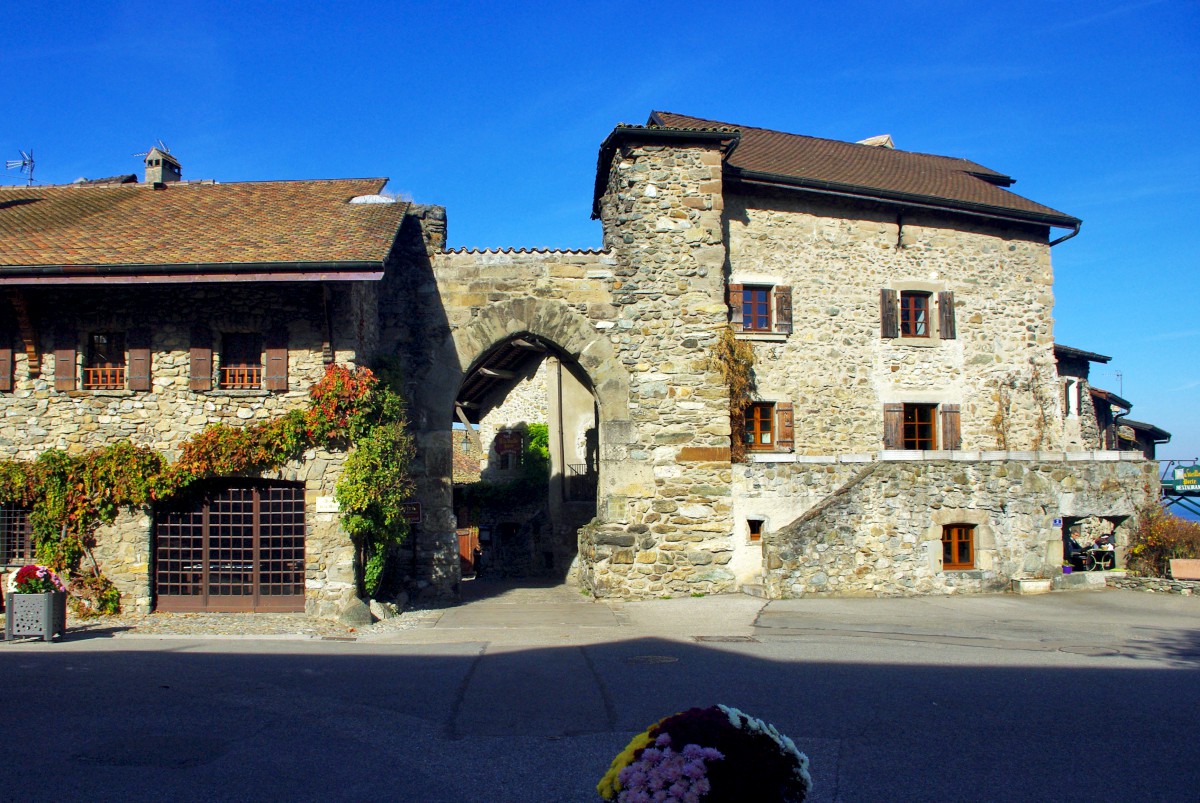
This arched passageway faces the town hall and the Tourist information centre.
It is often known as the Thonon Gate (Porte de Thonon).
Porte de Nernier
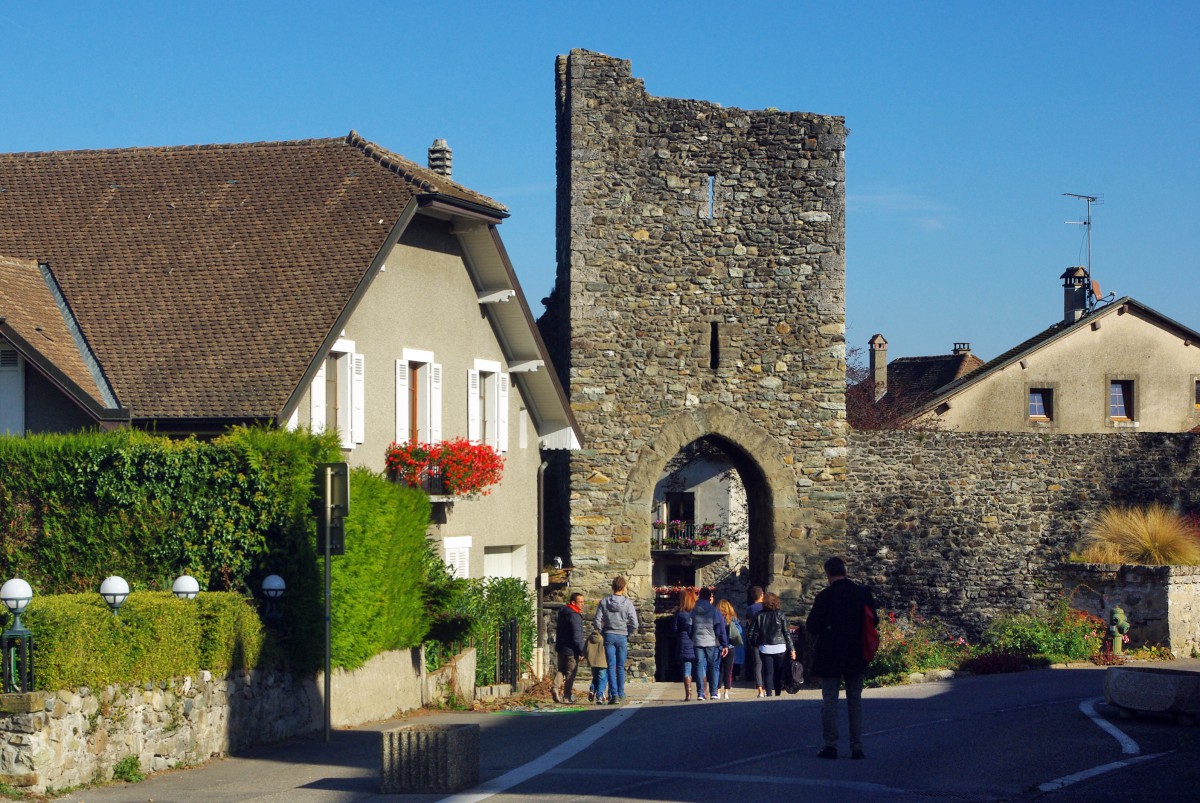
The Nernier gate gives access to the village from the West.
It is often known as the Geneva Gate (Porte de Genève) and is topped by a 10-meter-high watchtower.
The narrow streets

Between the two entrance gates are a small number of old streets lined with restaurants serving fresh lake fish, art boutiques and workshops.
The more picturesque are Grande Rue Paul Jacquier, Rue des boulangers and Rue de l’église.
The narrow cobbled streets are beautifully decked with geraniums and wisteria in the summer and autumn.
Yvoire is well-known for its floral display and has been rewarded a ‘Four Flowers’ rank for the last few decades.
They lead to the village’s central square, Place du Thay, where the parish church is found.
Place du Thay
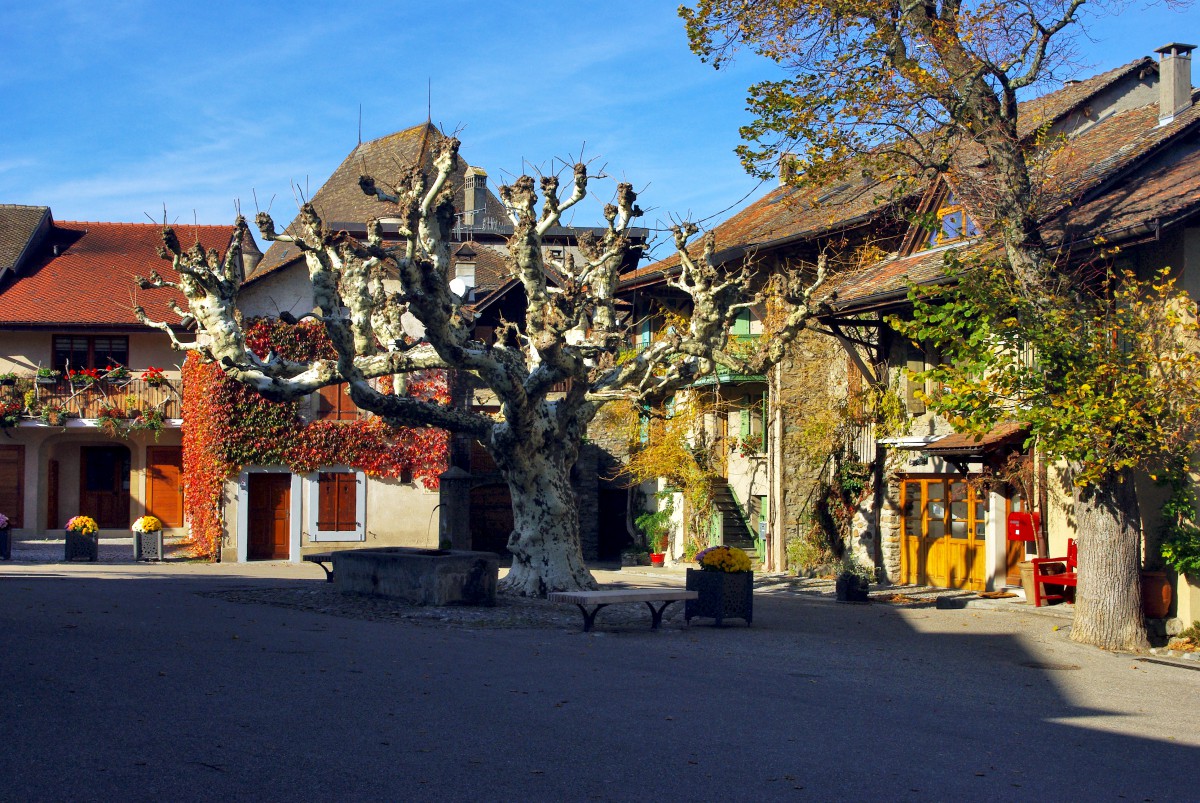
The delightful Place du Thay is the village’s central square.
In the shade of the trees, it has a particular Provençal atmosphere.
The Parish Church
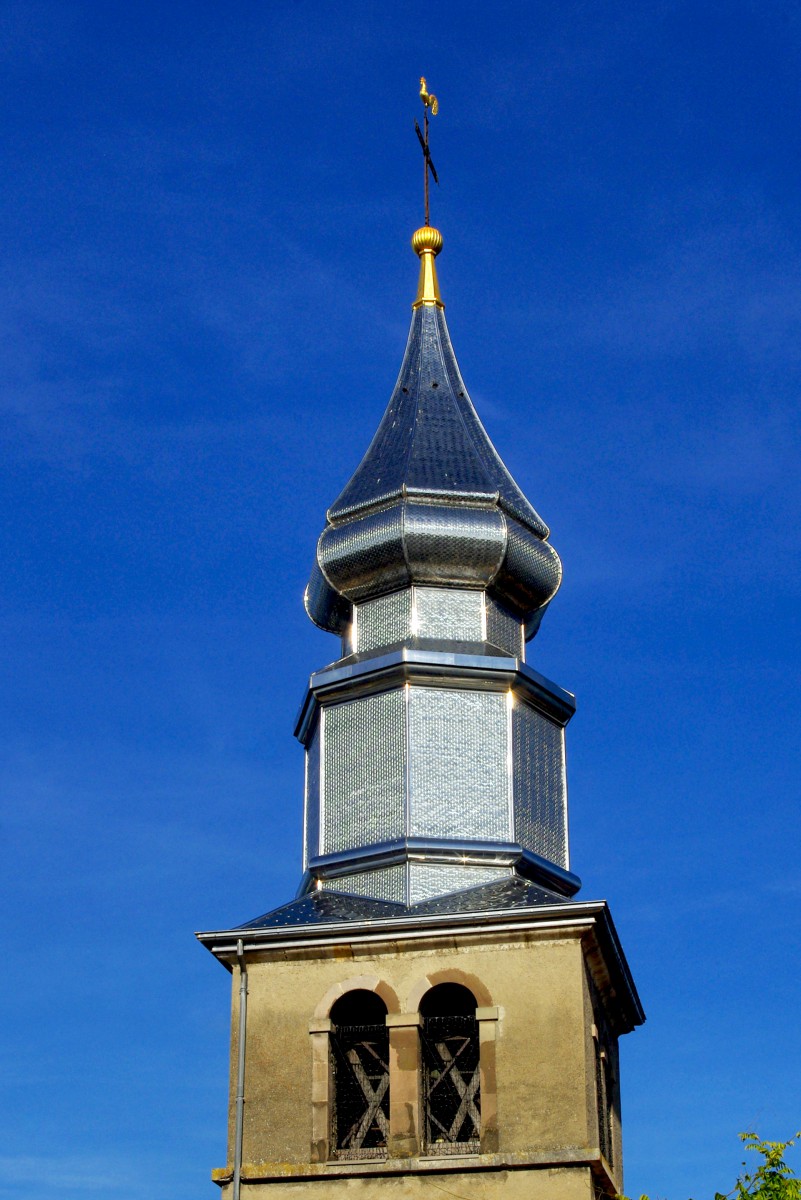
The St. Pancrace Church was initially built in the 11th century and has been rebuilt, enlarged and maintained several times since.
The onion-shaped steeple was added on top of the bell tower in 1854.
It is characteristic of religious architecture from the 19th century in Savoy.
The steeple was covered in stainless steel in 1989, and the weathercock in gold leaves.
On sunny days, it shines like a lighthouse on the lake.
Enter the church to admire the delicate pastel colours that ornate the nave.

The Castle of Yvoire
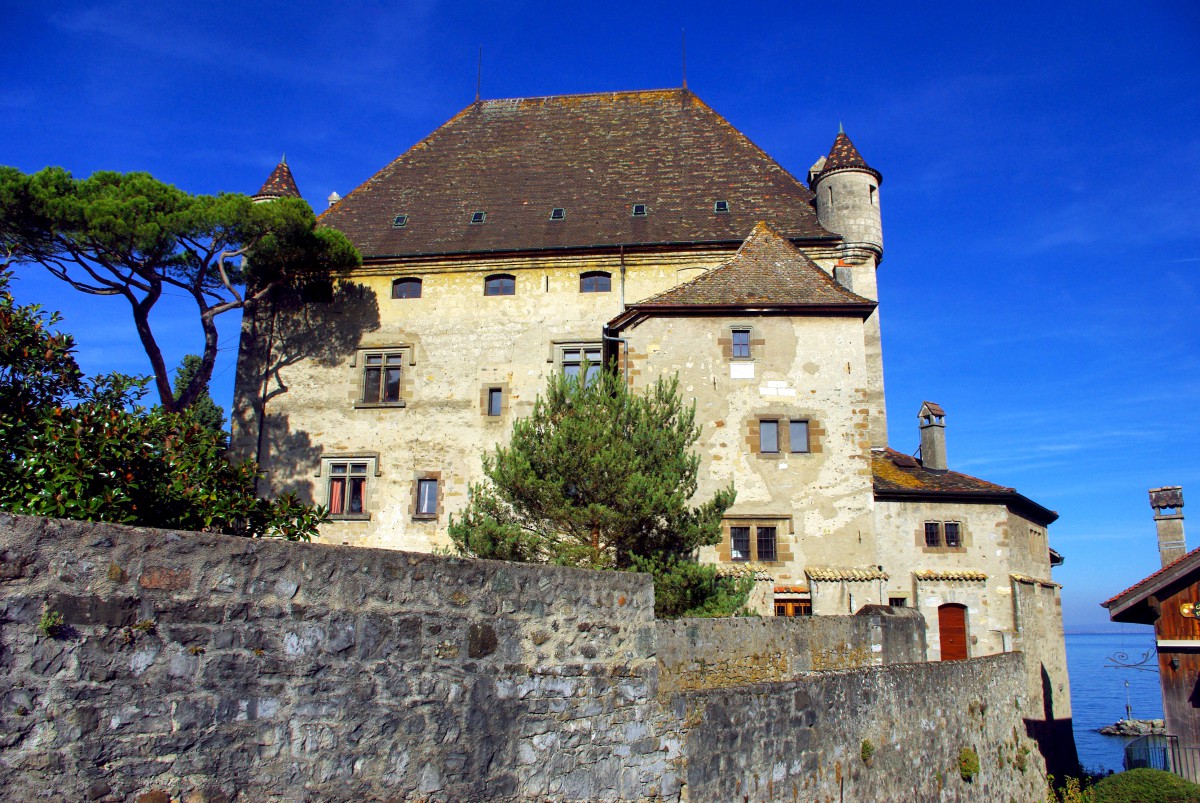
The castle is a private estate set on the edge of the lake.
The massive fortress has a large, steep roof flanked by four little turrets at each corner.
To have a great view of the castle reflecting on the waters, go to the Port des Pêcheurs or the Ferry terminal on the other side of the village.
It was built between 1306 and 1319 on the site of a much older fortress.
Count of Savoy Amadeus V ordered its construction, and the village was fortified simultaneously.
The castle played a military role by watching over the route’s navigation from Geneva to the upper valley of the Rhône in the Swiss Valais.
In the Middle Ages, an earth ditch separated the castle from the village.
A drawbridge accessed it.
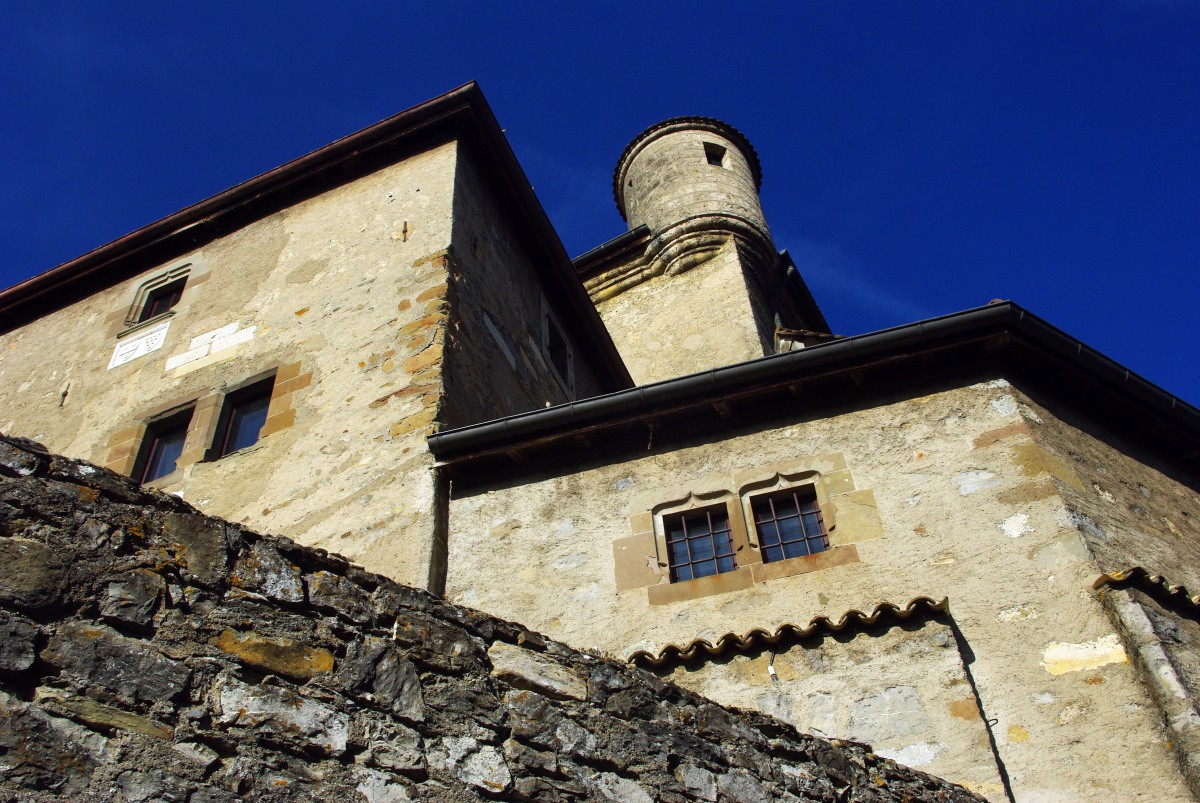
A fire destroyed much of the castle in 1591, but its owner, Félix Bouvier d’Yvoire, extensively restored it in the 20th century.
The roof and turrets were added in 1939.
It is privately owned and has been inhabited by the Bouvier family since 1655.
It is not open to the public.
The two harbours of the villages
The village has two harbours: a little fishing port on one side and the marina bordered by a promenade on the other.
The Port des Pêcheurs
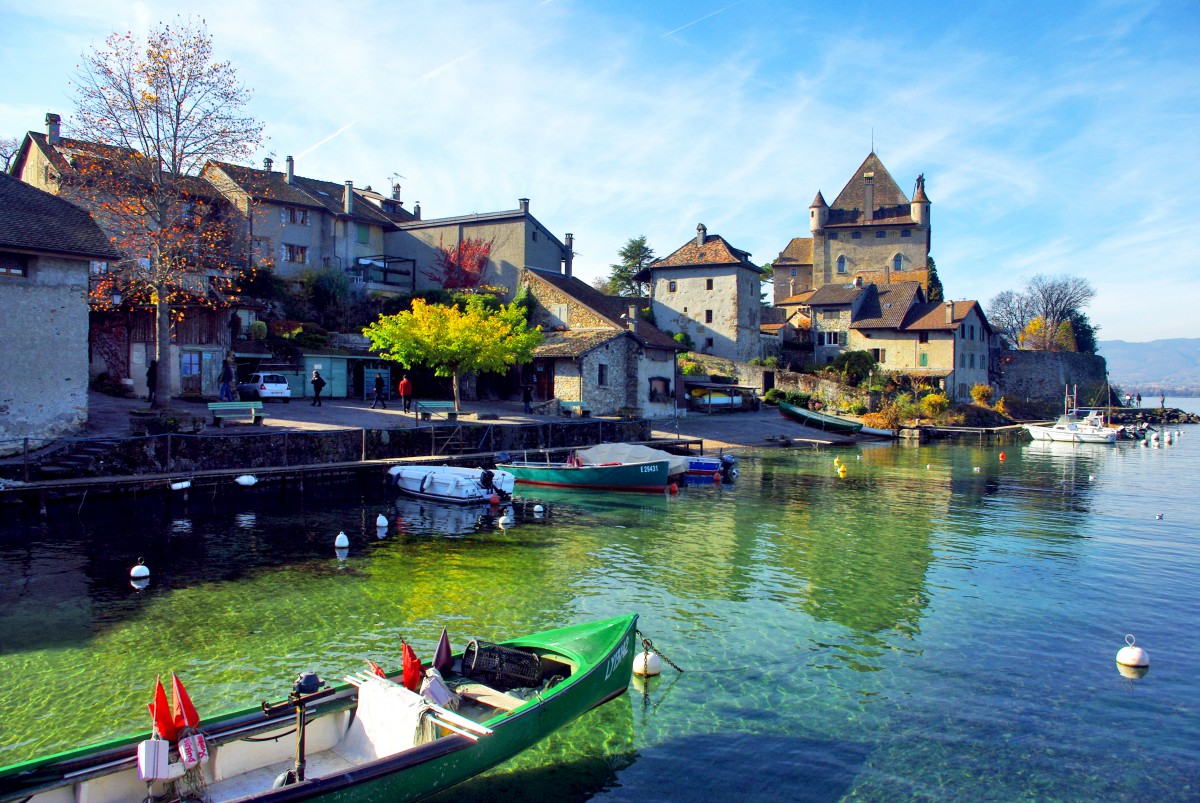
The little harbour of the fishermen is the oldest in Yvoire.
Walk to the end of the pier to enjoy great views of the old village and the castle, with the waves lapping on the shore.
The Grand Port
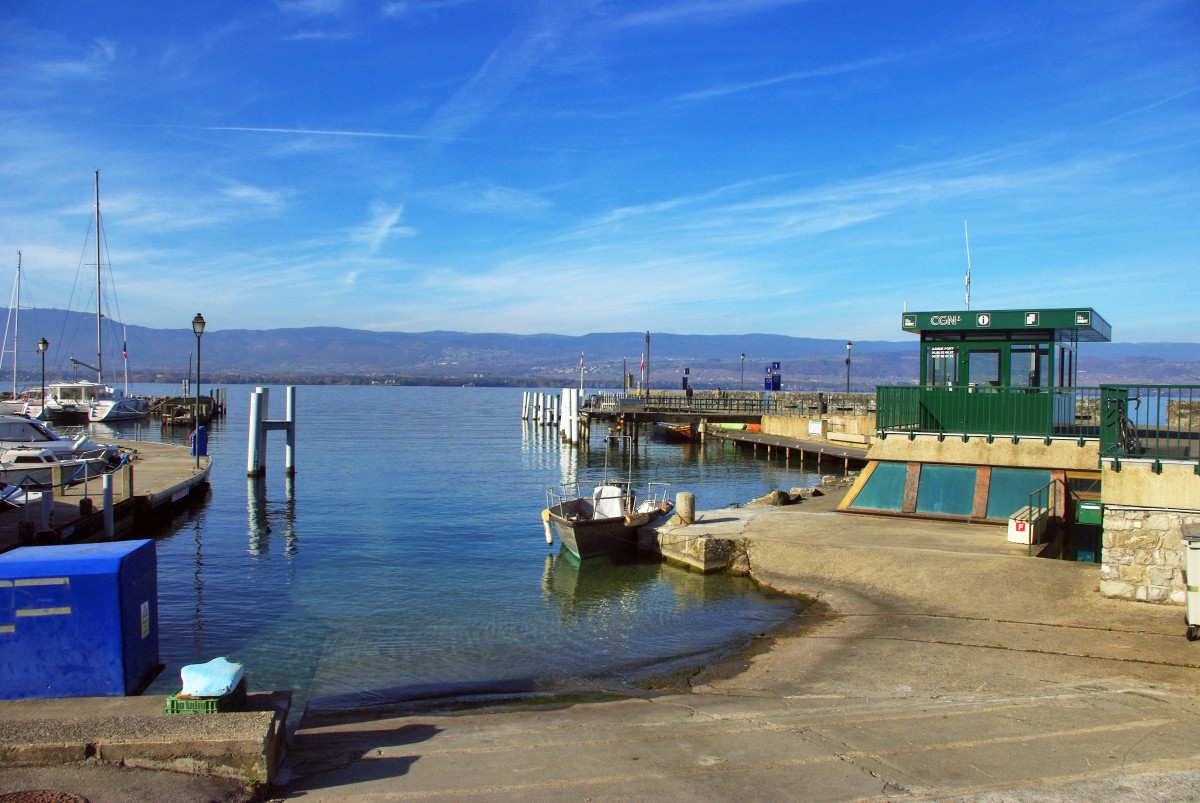
This is where the ferry terminal is found. Its marina is busy in summer with yachtsmen from Switzerland and Haute-Savoie.
Walk to the end of the pier to admire the view of the castle, the Alps of Chablais and the Swiss shore backed by the Jura mountains.
You can even spot the Swiss city of Lausanne in the distance.
The Garden of Five Senses
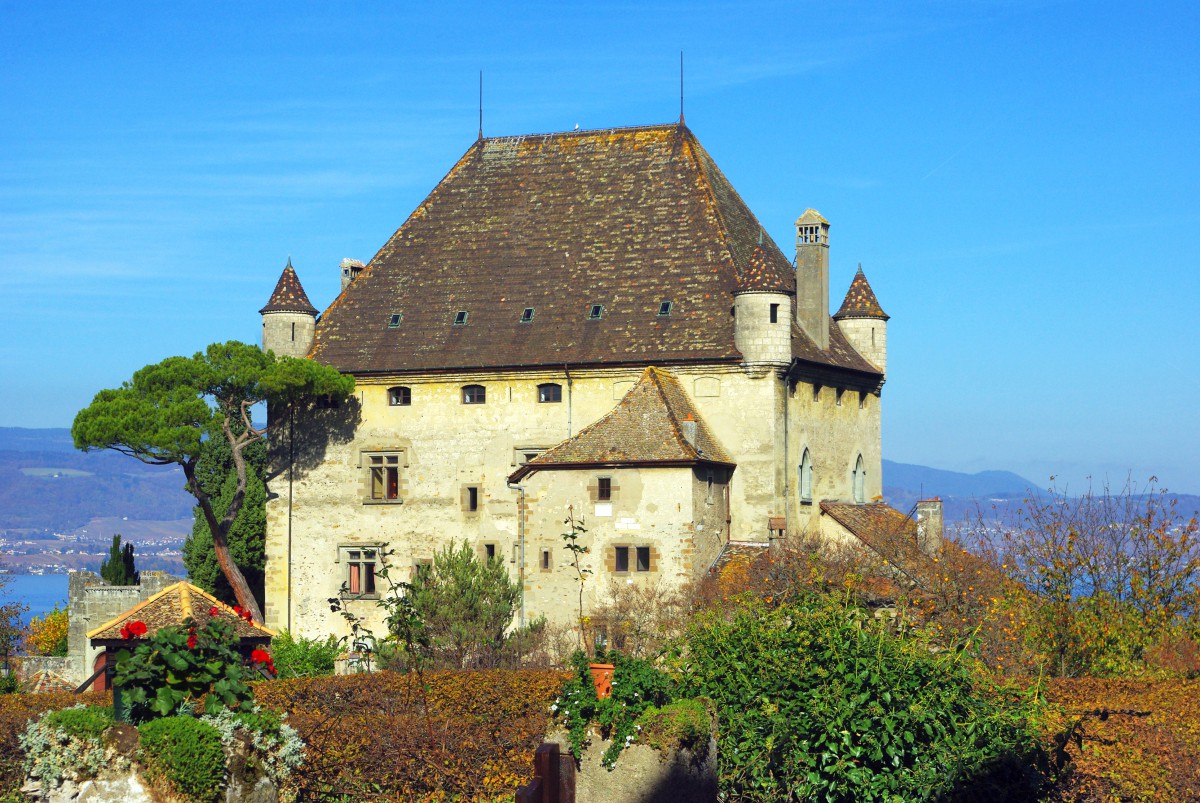
In the heart of the village off Rue du Lac, the formal Garden of Five Senses (Jardin des Cinq Sens) used to be the castle’s vegetable garden.
This plant kingdom, inspired by medieval times, features fruit trees, rose bushes, medicinal and aromatic herbs, aviaries, and fountains.
The garden features a maze and other green spaces with a collection of 1,300 varieties of plants designed to appeal to each of the five senses: the garden of flavours, the garden of fragrance, the garden of textures, the garden of sight and the garden of hearing.
The Five Senses garden has been listed as a Remarkable Garden (Jardin Remarquable).
More photos of Yvoire
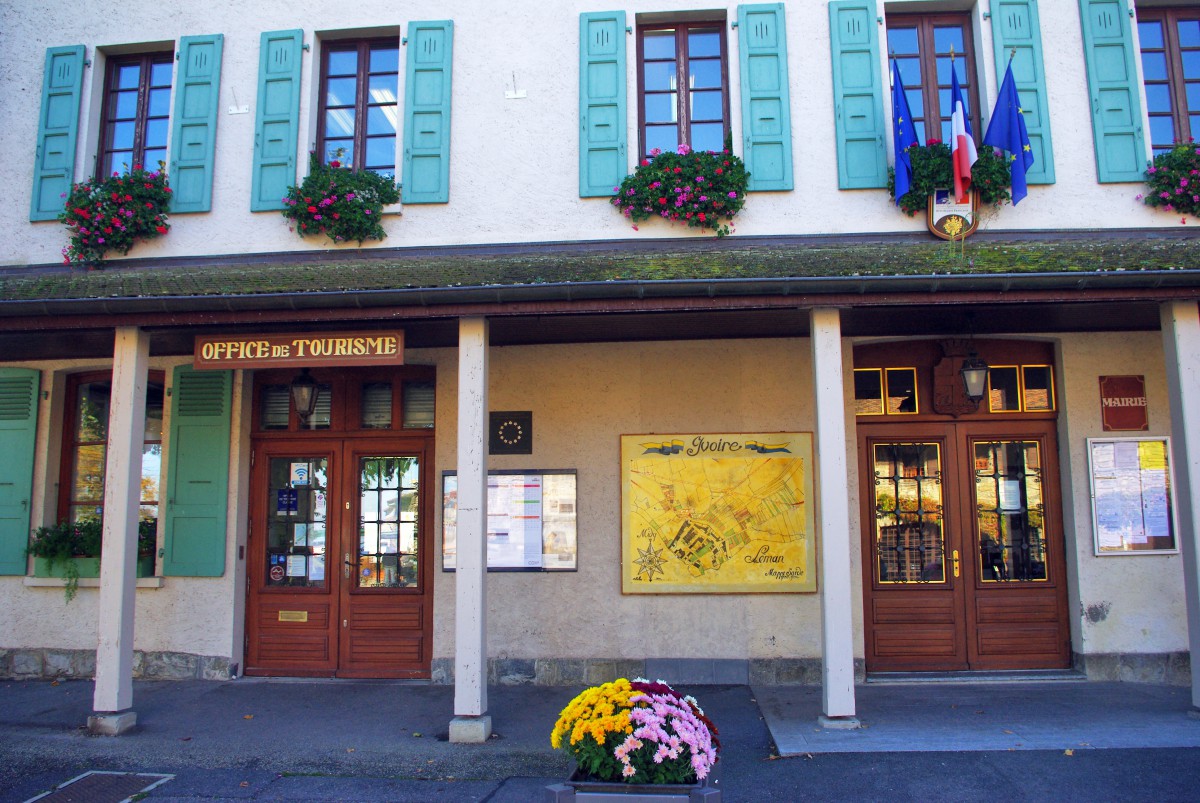
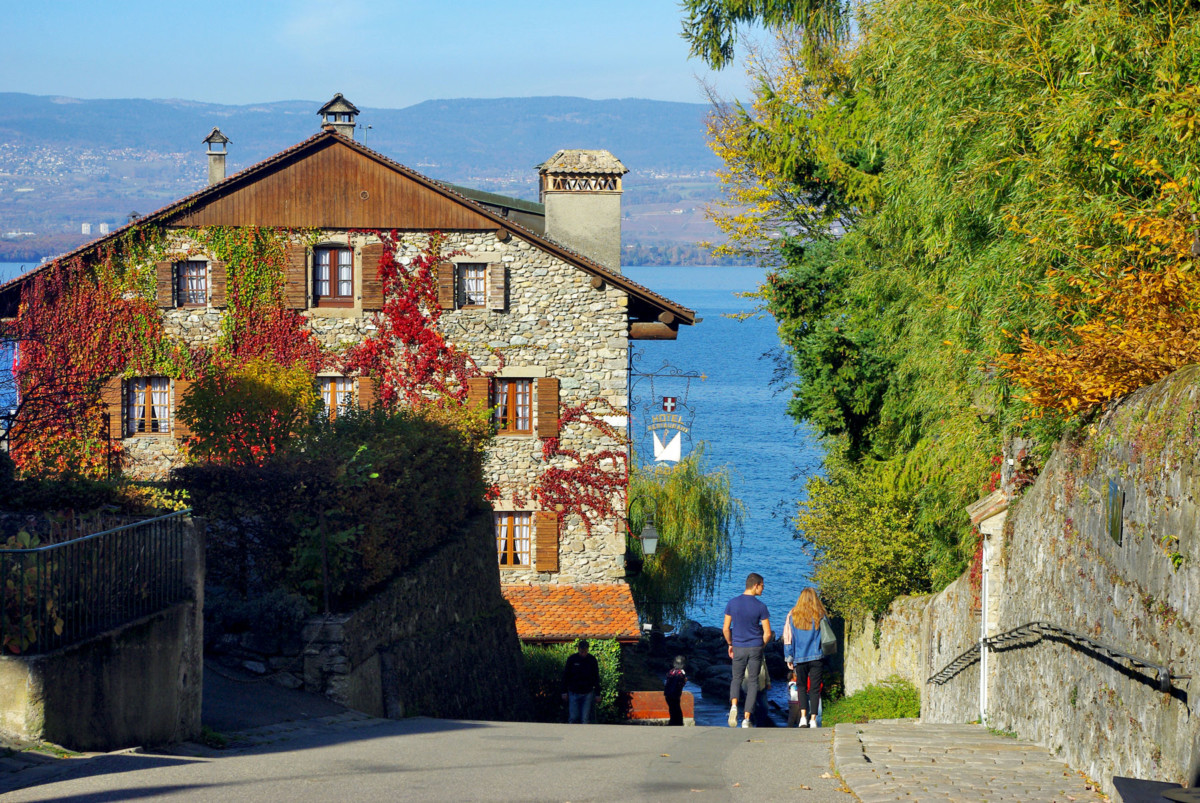
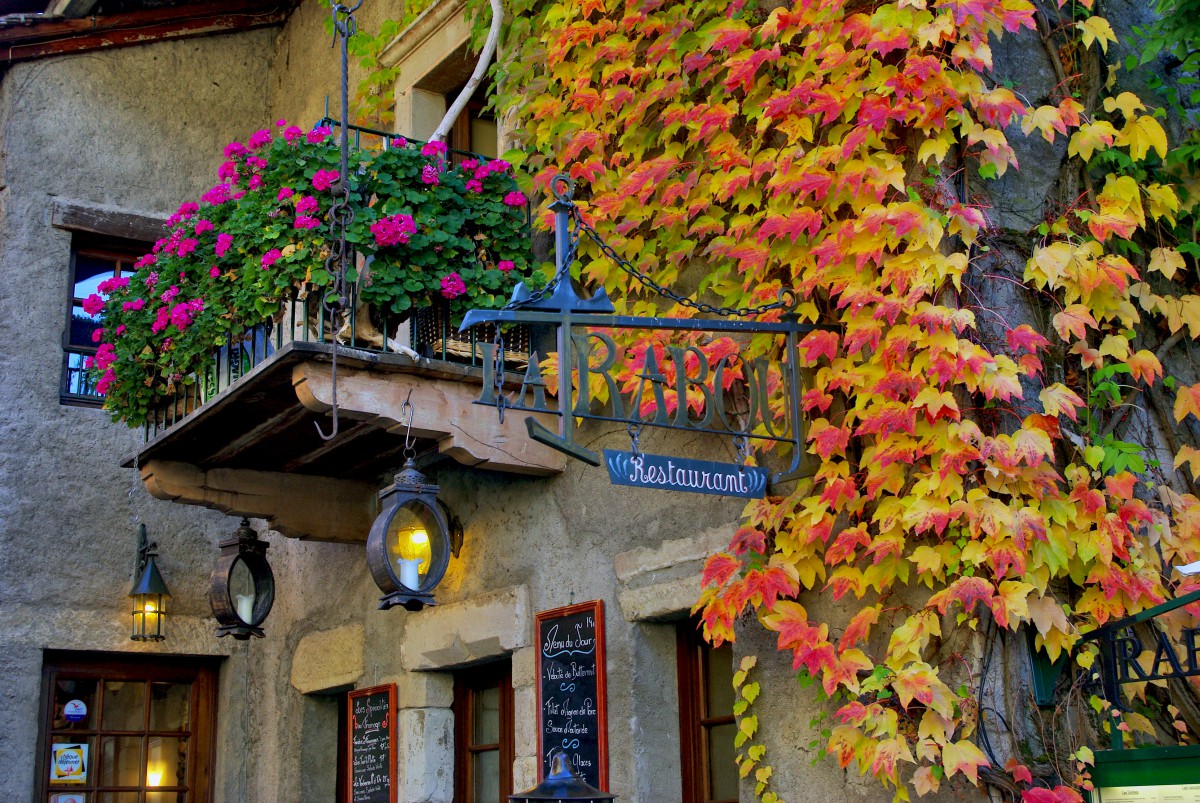
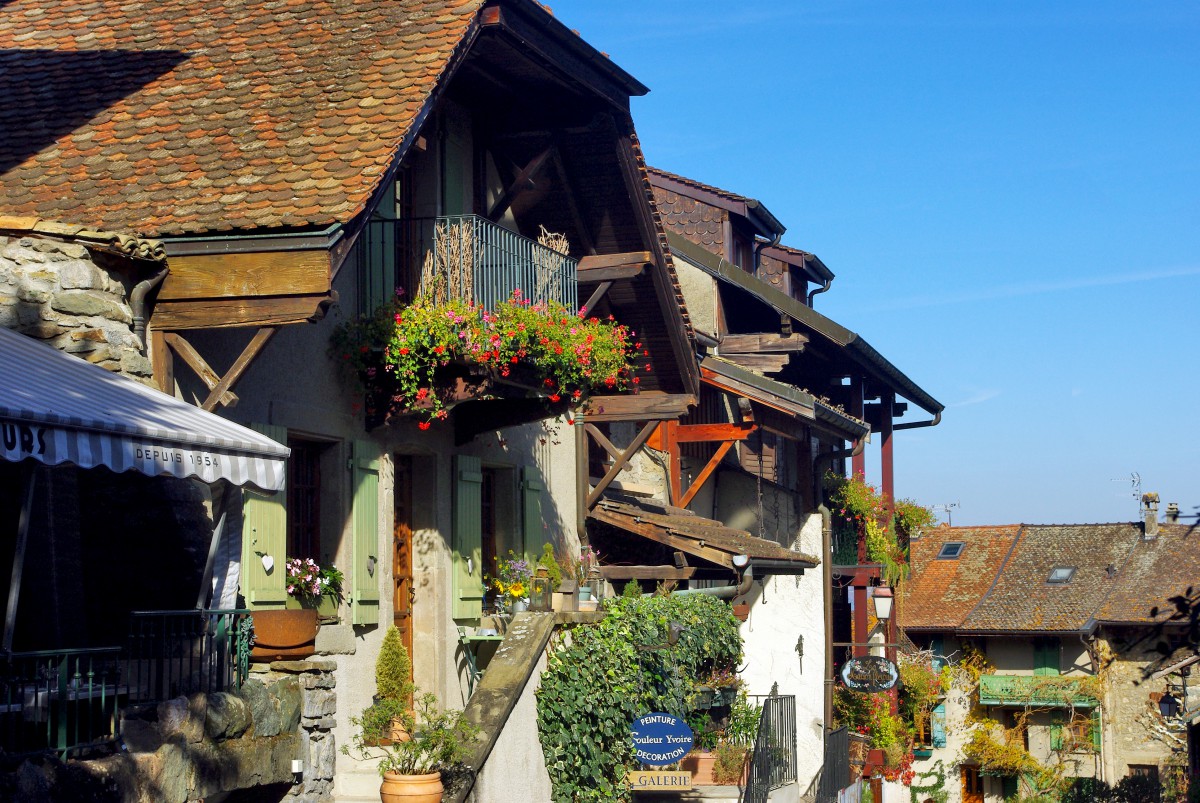
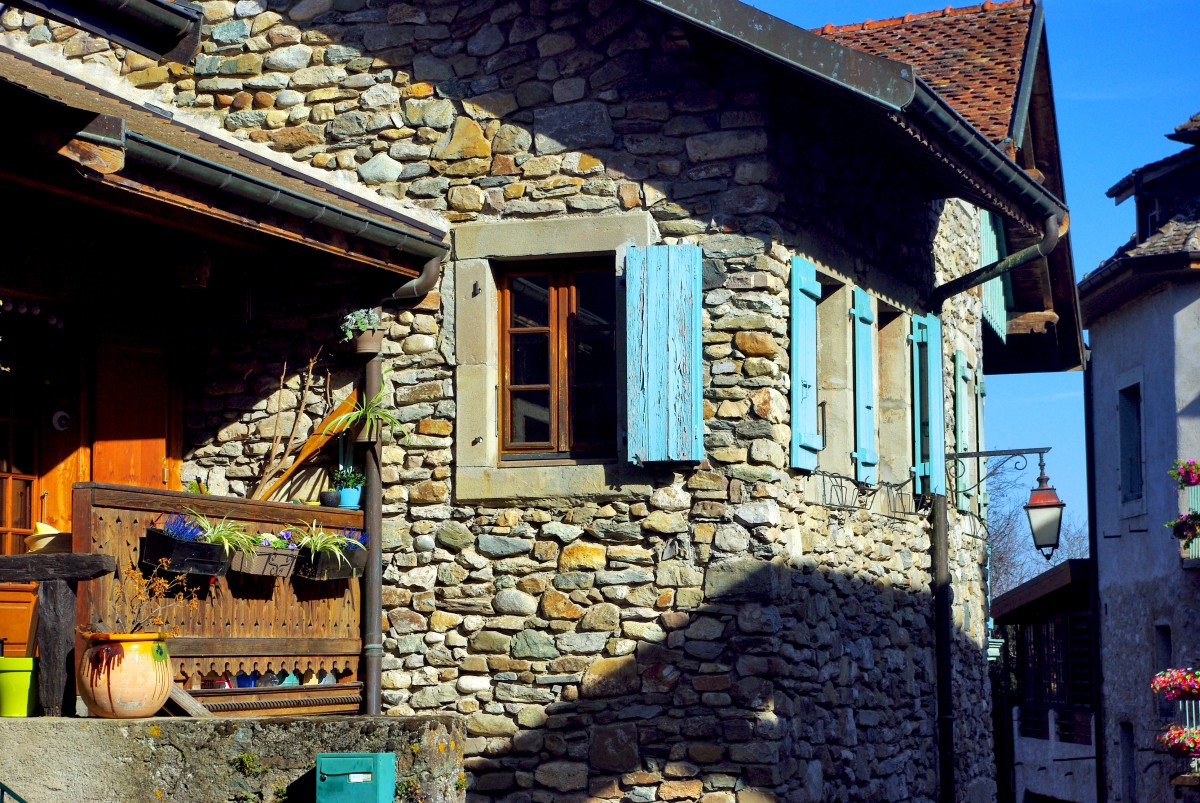
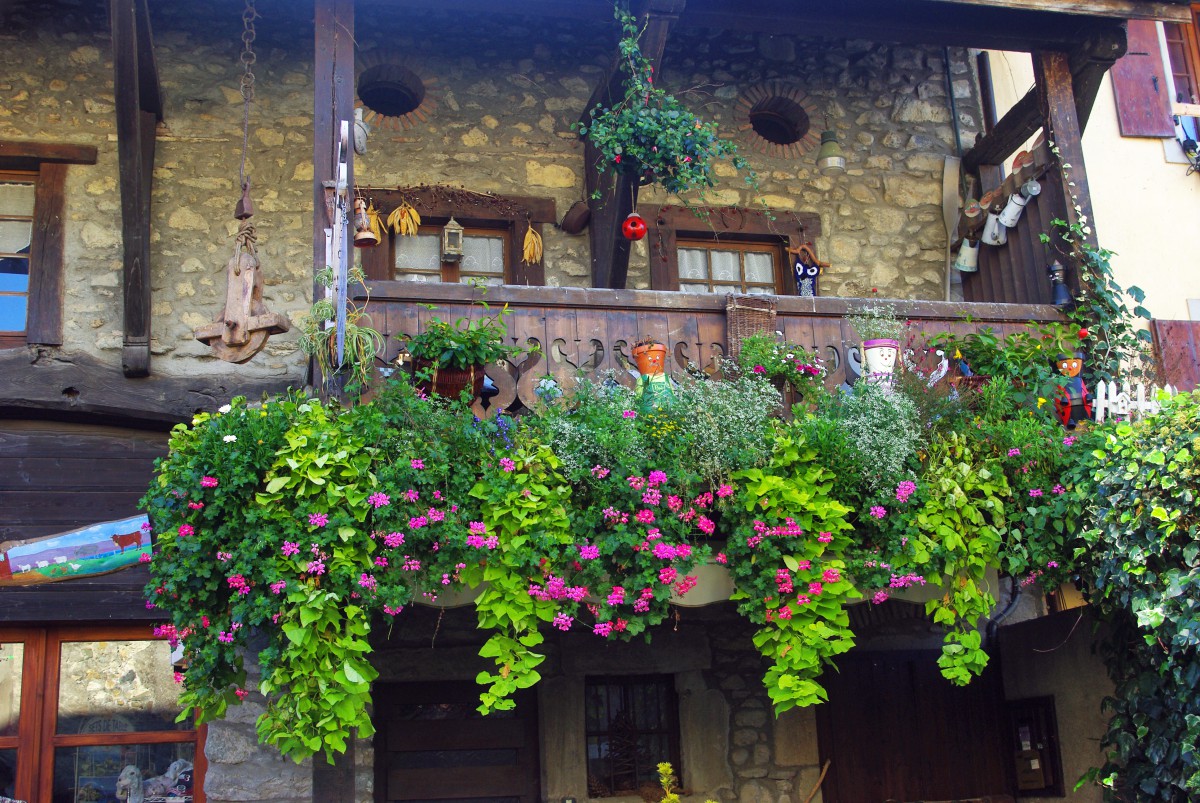

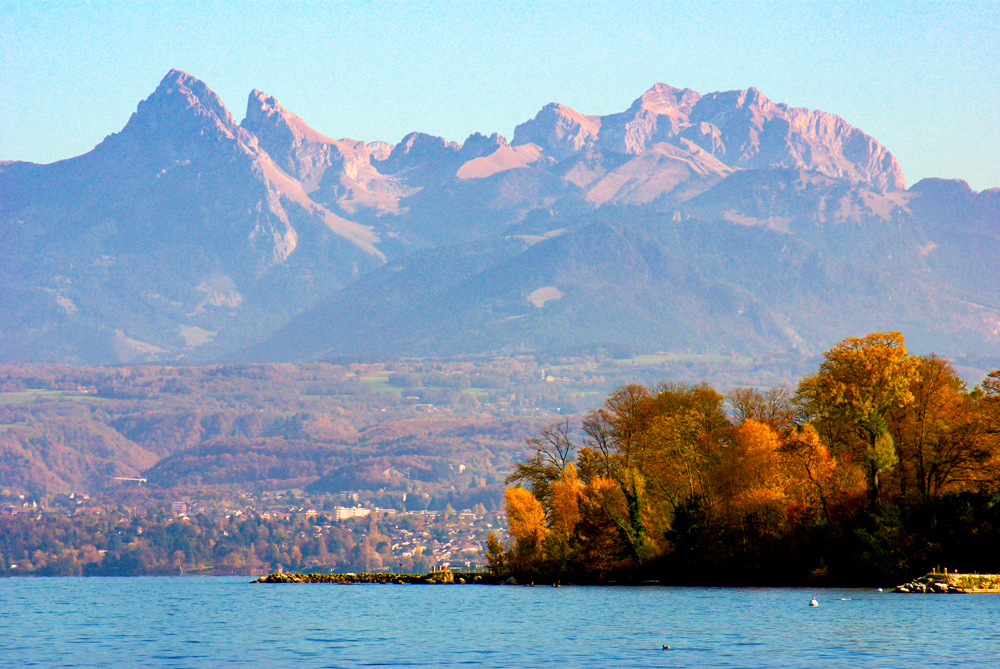
Access and other practical info
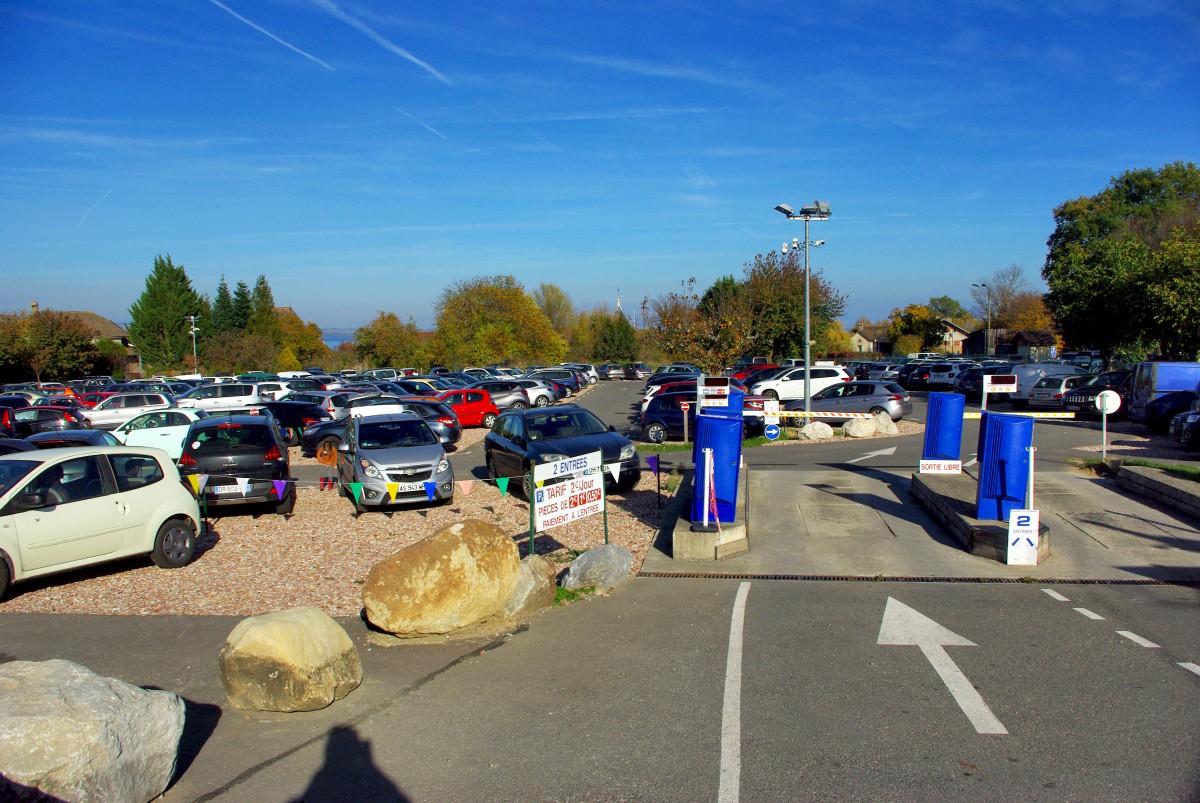
- Yvoire is a 30-minute drive from Geneva and some 25 km from the west of Évian-les-Bains.
- There are many car parks found just outside the village. The one we chose (Les Jardins) cost 2 euros for the whole day.
- A ferry boat link crosses Lake Geneva in 20 minutes to Nyon, Switzerland. Check out times and fees here.
- Tourists can invade the village on sunny summer days and on weekends. If possible, plan to visit Yvoire on a weekday in Spring and Autumn.
- Guided visits to the medieval village are organised in the summer—contact the Tourist Information Board for more information.
- For more information, check out the Visit Yvoire site (in French only).
- Check out accommodation in Yvoire on the following map:
PIN IT for later!
Did you like what you read? If so, please share this article on Facebook and X or pin it on Pinterest!
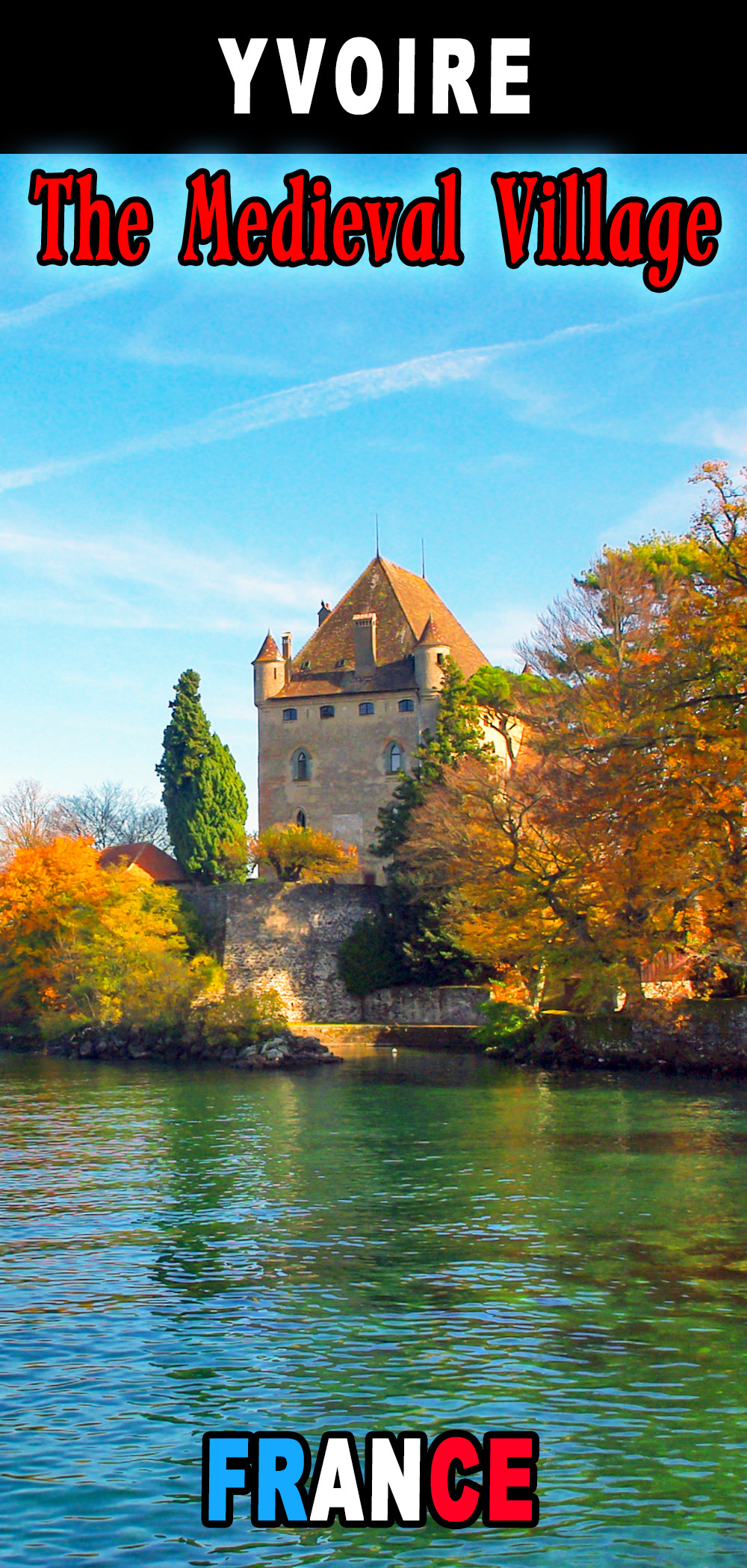


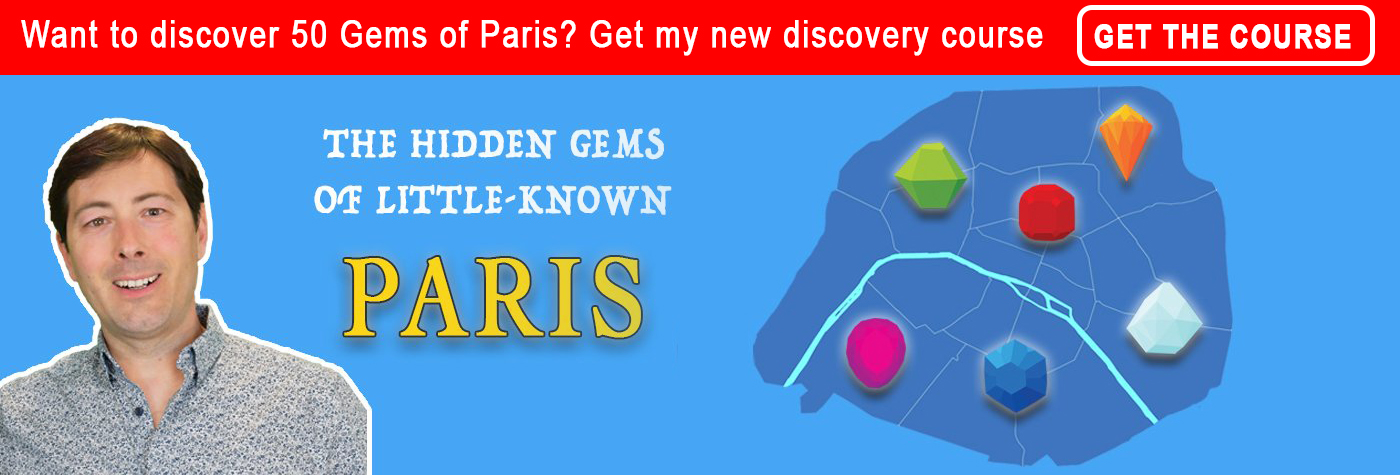
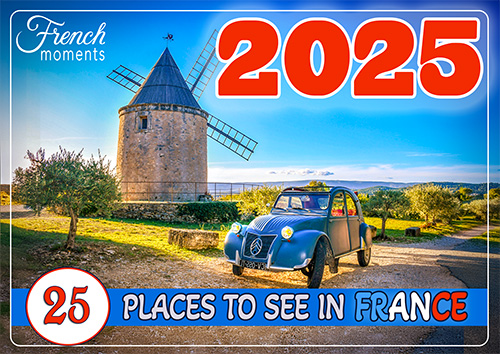
By chance, many years ago we visited Yvoire in May. The spring bulbs and trees were still in bloom and the thousands of colorful annuals had been planted through out the village, spilling over every window box, planter, and pot in every home. In awe of the beauty of the moment we wandered the streets that lead us to the Jardin des Cinq Sens. The ancient walled garden across the street from the chateau gave me the sense of the great secret!
Erase all external noise and emerse oneself into the garden.
"I sat in the quiet hour the garden and found my soul in the heart of a flower."
Thank you Jean! Yvoire in the spring is indeed a beautiful place to visit!
Eastern France is so beautiful. Thank you for this peek into charming Yvoire!
You’re welcome, merci Ellen! 🙂
I love this tiny town. My friend Renee lived in Corsier Geneva. I have visited often. Along this side of the lake there is a plaque to Adolph Lamartine that of course she showed to me. Thank you for your and interest in showing us France. Cecelia Lyons
Thank you, Cecelia. Lake Geneva is such a beautiful place, from the Swiss to the French coasts! 🙂
Correction to my post. The plaque is to Alphonse de Lamartine.